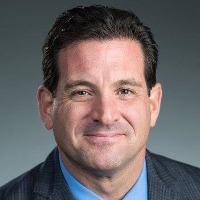As a CPA, you’ve mastered the specific accounting or tax challenges within your niche practice. Whether you’re deep in tax compliance, audit, or forensic accounting, it’s easy to focus solely on helping others while overlooking your own financial situation. With the year-end fast approaching, now’s the time to step back and take a closer look at the financial health of your own and your practice’s financial health. Let’s walk through some practical steps you can take to maximize your benefits before December 31st while there’s still time to make meaningful changes.
Analyze Your Retirement Plan Contributions
Being a CPA practice owner comes with the perk of choosing from various retirement plans tailored for small business owners. Whether it’s a SEP IRA, SIMPLE IRA, or a Solo 401(k), each offers unique advantages.
- SEP IRA: Allows for contributions up to 25% of your net earnings from self-employment, with a maximum limit of $69,000 for 2024. Contributions are only made by the employer.
- SIMPLE IRA: Offers a simpler setup with employee deferrals up to $16,000 and optional employer matching.
- Solo 401(k): Combines high contribution limits with flexibility, letting you contribute both as an employer and an employee, with a maximum limit of $69,000 in 2024, or $76,500 if you’re over 50.
Already have a plan? Great! Have you maximized contributions for the year? Thinking about your business’s year-end finances now can give you a clear understanding of how much you’d like to contribute to your own retirement plan and those of your employees if you have them. If you have a SEP IRA, should you make contributions now or wait until closer to the tax deadline? Is there an optimal amount that can help your business from a tax perspective?
Regardless of your plan, keep in mind that the earlier you contribute to your plan, the more time your investments will have to potentially grow. However, if you feel that delaying will be better for your company or you don’t have the funds available to contribute, you have the right to delay or not contribute at all.
Employer Matching Obligations and Nonelective Contributions
A SIMPLE IRA is a bit different. Your employees’ contributions are deducted automatically from their paychecks, and you have thirty days to contribute those funds to their SIMPLE IRA account. However, if your plan includes an employee match, you do have the option to delay making that matching contribution until a time beneficial for your business, as long as you ultimately do so before deadlines.
If your business is going through a rough patch, you might be able to reduce the match to as low as 1% in two out of five years, as long as you notify employees before the 60-day election period that begins on November 1st. You are also not obligated to make contributions to your own plan.
An employer match is only necessary if the employee makes contributions themselves. There may be cases when they decide not to make contributions, in which case you’re not obligated to contribute to their plan. However, another option exists that sees you paying every employee 2% of their compensation regardless of what they contribute. This is known as a nonelective plan, and if you opt for this plan, you are obligated to follow through with annual contributions for all eligible employees. Determining 2% of each employee’s salary is easier to track, and you may even end up paying less overall into employee retirement plans if the conditions are right.
Tax Benefits of Employer Contributions
In any case, all employer contributions are considered business expenses and thus reduce your taxable income while providing tangible benefits to your employees. You can then use your tax savings to reinvest in your company. If you have just started a plan, be sure to clarify if you qualify for tax credits to help cover the costs of setting it up.
Your business may qualify for a tax credit of up to $5,000 per year for the first three years to offset setup and administrative costs. Additionally, if you include an automatic enrollment feature in your plan, you could be eligible for an additional $500 annual credit.
Defer Income and Accelerate Expenses
Delay Payments to Lower This Year’s Taxable Income
If you’re in a position where cash flow is steady, consider delaying some of your income into the next tax year if possible. This is particularly helpful if you anticipate being in a lower tax bracket next year or if you’re looking to minimize taxable income for the current year. By deferring income, you might hold off on invoicing clients until January, so those payments don’t hit your books until the new tax year. This can effectively reduce your taxable income for the current year, giving you immediate relief from taxes.
Take Deductions Now to Reduce This Year’s Tax Bill
On the flip side, accelerating expenses can be a smart way to increase deductions and further reduce your taxable income. Consider prepaying for services your business will need next year, stocking up on supplies, or even investing in new equipment that qualifies for immediate depreciation. These expenses, when properly timed, can be deducted in the current tax year, providing a much-needed offset to any higher-than-expected income you might have earned.
Boost Your Health Savings Account (HSA)
The HSA is one of the most tax-advantaged ways to save for future health expenses, and the benefits can easily extend into retirement. Contributions are tax-deductible, earnings accumulate tax-free, and even withdrawals are tax-free as long as they are used for qualifying medical expenses.
An HSA also brings unique benefits to business owners who offer it as a benefit to employees. When employees contribute to an HSA with pre-tax dollars, as a result, employerspay less FICA and FUTA payroll taxes. Like a retirement plan, you can also offer an HSA match to encourage participation and improve the retention of talented employees – further reducing your taxable income.
Of course, you can also make contributions to your own HSA to help prepare, for example, for long-term care costs down the road. The earlier you start, the higher the chances that you’ll have a sizeable amount of funds to ease the burden of medical costs down the road! Plus, you can take that tax deduction for yourself, as well.
Contribution Limits
For 2024, the contribution limits are:
- Individual Coverage: Up to $4150
- Family Coverage: Up to $8300
- Catch-Up Contribution: Additional $1,000 if you’re 55 or older
Use It or Lose It: Flexible Spending Accounts (FSAs)
FSAs allow employees to set aside pre-tax dollars for out-of-pocket healthcare expenses, such as prescription medications, medical equipment, and vision or dental care. Its benefits are twofold–they give your employees another tax-advantaged way to save for healthcare expenses and also give your practice tax benefits.
Since employee contributions are made with pre-tax dollars, both employees and the business save on payroll taxes. Lower taxable payroll means reduced Social Security and Medicare taxes for the business, providing immediate financial benefits. Additionally, the “use it or lose it” rule can work in your favor. Any unused funds at the end of the year often revert back to the employer (unless your plan offers a grace period or carryover option), which helps offset administrative costs associated with running the FSA program. Still, it’s worth reminding employees to check their FSA balances and plan to use any remaining funds. After all, their health directly influences the productivity and overall success of your practice!
In Conclusion
Running your own practice can be overwhelming, and it’s easy to overlook areas like retirement planning and tax optimization, especially when your focus may lie in other niche areas of accounting. Plus, you may not always have the time—or expertise—to manage the financial aspects of your business that fall outside your core services and offerings. That’s where a financial professional can help.
By taking a moment to prioritize your own financial well-being and seeking expert guidance, you can set yourself and your practice up for long-term success. Don’t wait—now’s the perfect time to make those impactful changes before year-end!











